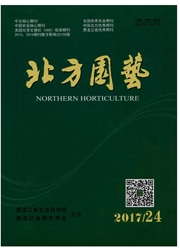

 中文摘要:
中文摘要:
以菜豆(Phaseolus vulgaris L.)为试材,通过测定叶绿素荧光参数,研究了菜豆叶片局部感染白叶枯(Xanthomonas oryzae)病原菌后,叶片侵染位点和同一叶片非侵染位点叶绿素荧光特性的反应。结果表明:在病原菌侵染后,菜豆叶片的侵染位点和同一叶片非侵染位点叶潜在最大光化学效率(Fv/Fm)、光适应下叶片的最大光化学效率(Fv′/Fm′)、光系统Ⅱ(PSⅡ)的潜在活性(Fv/F0)均显著降低,表明了叶片PSⅡ供体侧及反应中心的活性均受到病原菌侵染的系统性抑制;叶片侵染位点和同一叶片非侵染位点的非光化学猝灭系数NPQ和qN以及调节性能量耗散的量子产量[Y(NPQ)]有所上升,但其非调节性能量耗散产量[Y(NO)]下降,表明病原菌侵染导致了叶片以热能形式耗散的光能比例以及菜豆的光保护能力均系统性增加。综上可知,白叶枯病菌的侵染对菜豆叶片叶绿素荧光特性产生了系统性影响。
 英文摘要:
英文摘要:
Taking Phaseolus vulgaris L. as material,the effect of the infection with Xanthomonas oryzae on the behaviors of photosystemⅡ(PSⅡ) in the infected area and in the non-infected area of the same bean (Phaseolus vulgaris L. ) leave〉; were investigated by measuring their chlorophyll fluorescence parameters. The results showed that the values of maximal photochemical efficiency of PSⅡ (Fv/Fm), the maximal photochemical efficiency of light adaptation (Fv′/Fm′), and potential activity of PSⅡ(Fv/F0 )were significantly decreased in both the infected area and the non-infected area of the same leaf,compared with those of the control. These observations suggest that the reaction centers and donor sides of PSⅡ were systemicly inhibited by Xanthomonas oryzae infection. The infection with Xanthomonas oryzae caused a significant increase of non-photochemical quenching coefficient (NPQ and qN) and quantum yield of regulated energy dissipation [Y(NPQ)] but caused a decrease of the quantum yield of non-regulated energy dissipation [Y(NO)]. These obervations suggest that the pathogen infection caused a systemic enhancement of the energy dissipation in the form of thermal of light energy and the protection capability of light reaction. All of these results indicated that the infection with Xanthomonas oryzae had a systemic impact on chlorophyll fluorescence characteristics of bean leaves.
 同期刊论文项目
同期刊论文项目
 同项目期刊论文
同项目期刊论文
 期刊信息
期刊信息
